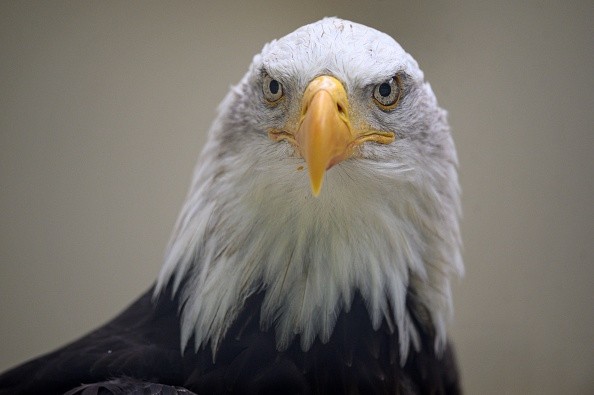Lead poisoning is affecting the population number of bald eagles, as per scientists at Cornell University's Department of Public and Ecosystem Health. According to the study, birds are consuming up to 6% of the gunshot ammunition used by hunters.

Effects of Lead Poisoning on Bald Eagle Populations
Bald eagle populations in the Northeast were examined for the study, which was published in the Journal of Wildlife Management.
Researchers discovered that field dressing hunters placed eagles at risk by leaving contaminated organs behind after killing their prey, according to CBS News.
Owls, crows, coyotes, foxes, fisher, and bears all devour the carcasses, which means they are all at risk of being poisoned by eating them.
Cornell University assistant research professor Krysten Schuler, senior author of the study said, scientists haven't collected data on these other species in the same way that they pay attention to eagles.
According to Schuler, they are using eagles as a symbol of the problem, but eagles are not the only ones that are feeling the effects.
Even if a human eats a game species that has lead shards in lead, they could be poisoned. The study's researchers believed their findings would help hunters and policymakers alike make better decisions about ammunition, such as switching to copper-based bullets.
Other Causes of Decline in Bald Eagle Populations
A "cushion" that protects the population from misfortunes like natural disasters or the West Nile virus could be undone by the bald eagles' reduced growth rates, according to the researchers.
Once threatened by DDT use after WWII, the eagle population began recovering after the 1973 Endangered Species Act was passed. A four-fold increase in population was recorded in just four years, from 2009 to 2021, in the Lower 48 states alone.
According to the latest research, the growth rates of females and males of the common bald eagle were found to be 4.2 percent and 6.3 percent, respectively.
Even though the eagle population appears to have rebounded, some perturbation may come along that could cause eagles to drop again, Schuler stated.

Tracking Bald Eagle Populations
New data from the U.S. Fish and Wildlife Service (USFWS) shows an increase in the number of bald eagles in the country. According to CNN's Lauren M. Johnson and Liz Stark, bald eagle populations have doubled since 2009.
Only 30,548 nesting pairs were recorded in 2009 out of 72,434 individual bald eagles. An aerial assessment in 2018 and 2019 by migratory bird biologists calculated the current eagle population, CBS says.
The surveys tracked eagle breeding places and counted territories. Aerial surveys were not possible in locations where the researchers worked with the Cornell Lab of Ornithology and eBird, a citizen science program. In addition to surveys, eBird data was used to determine the bald eagle population's overall size.
In the Los Angeles Times' Anna M. Phillips' article, around 180,000 birders reported seeing a bald eagle on eBird. To track bird data, only surveys were employed initially by the USFWS.
In an interview with the LA Times, Millsap said that while eBird data has improved estimations, the majority of the rise is due to bald eagle population increases.
Since the 1960s, when fewer than 500 nesting pairs remained, bald eagle populations have been steadily rebounding. Between 1870 and 1970, raptor populations plummeted due to habitat loss, hunting, and WWII-era DDT use. Bald eagles were declared endangered in 1967.
Related Article : Bald Eagles with Interlocked Talons Crash Land on Minnesota Street
For more news, updates about bald eagles and similar topics don't forget to follow Nature World News!
© 2025 NatureWorldNews.com All rights reserved. Do not reproduce without permission.





